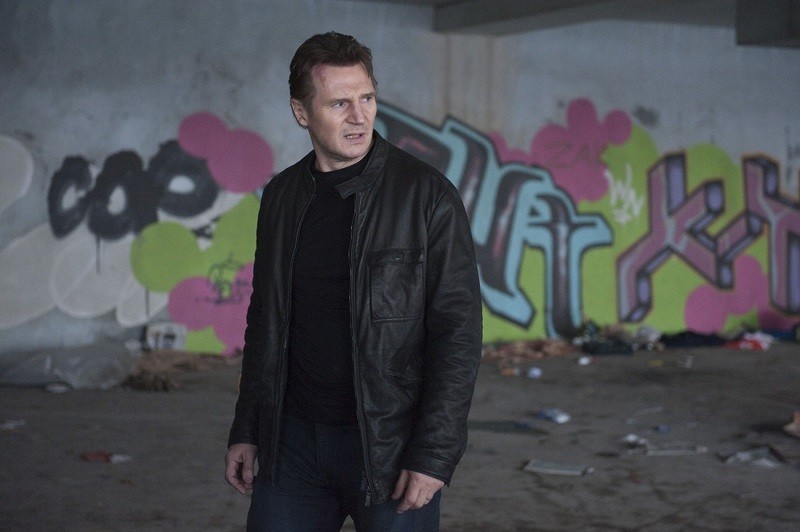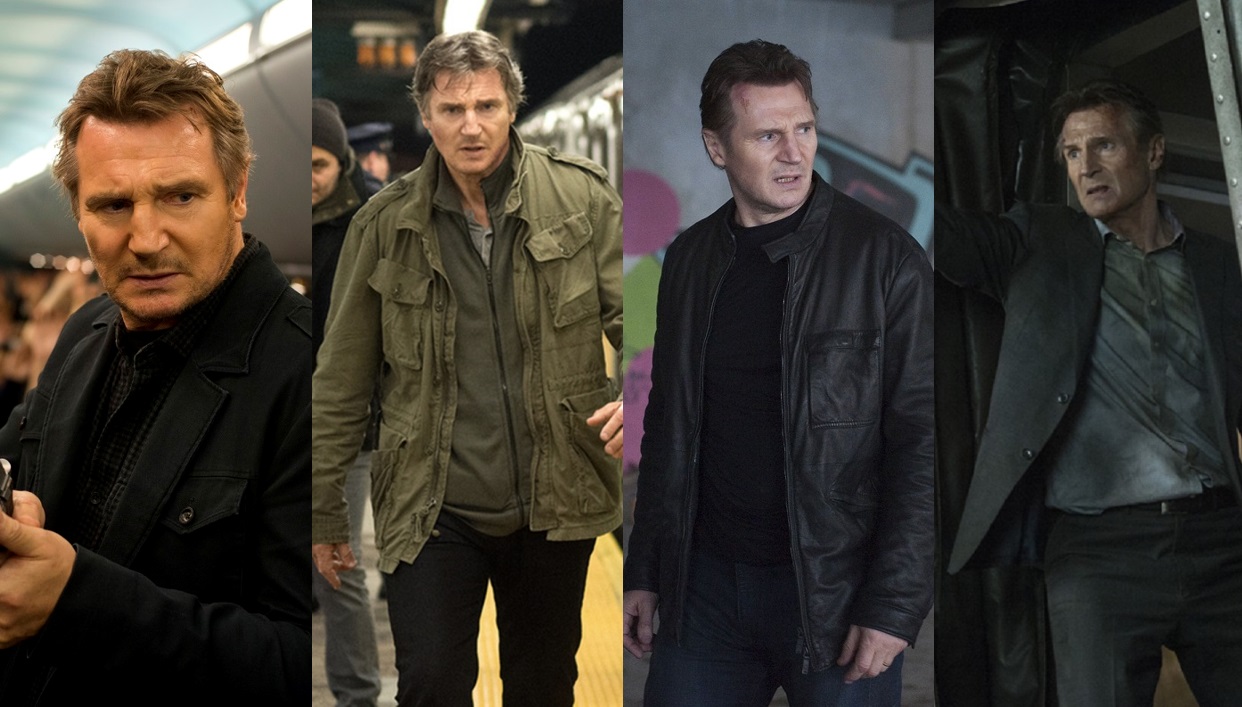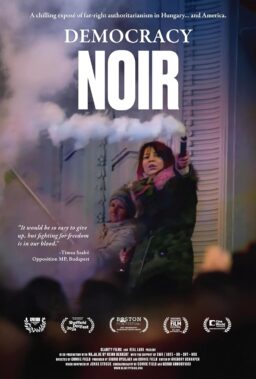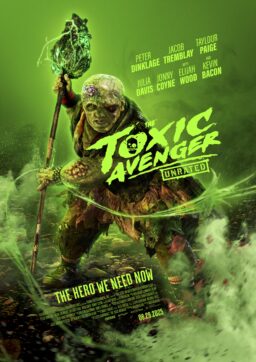They don’t make many true westerns anymore, but that hasn’t stopped Liam Neeson from trying. His late career pivot into the realm of modest-budget, audience-friendly action films has produced a string of works which which feature some virtues rarely seen in modern, mainstream movies. This is almost entirely due to how Neeson brings life to these roles, and imbues generic action with a suffocating sadness. These tales of vigilante justice are heavy on combat, but always have a deep sense of psychological hurt beneath them, even when the films themselves are of low quality. With January’s “The Commuter” reportedly Neeson’s self-imposed retirement from this genre (“I’m sixty-fucking five” was his quote at the most recent Toronto International Film Festival), we can take the opportunity to look back at how an accidental mega-hit blossomed into a cultural identity for Neeson, along with a collaboration with one of the finest Hollywood genre filmmakers of the decade.
The ‘January Neeson’ is famously the product of box office lightning in a bottle. “Taken” set the formula; having done the rounds across Europe in 2008, the film was served an ignoble release date the following January, the kind reserved for movies with little cultural hope. To the surprise of everyone, “Taken” was a smash, and Neeson’s phone call monologue about his “very particular set of skills” became a genuine pop culture object. Plenty of filmmakers and industry people saw a chance to turn January lead into gold. Make Liam Neeson play a broken man with a latent desire to kill, and you can get enough people out of their house in the dead of winter. So began the eight-film perennial run that ends this week.
As for “Taken” itself, there must be no other contender for the title of Most Divorced Movie Of All Time. How else to explain the grueling opening 25 minutes, the entirety of which is Neeson suffering single dad slings and arrows? It is punishing and relentless the way Neeson’s Bryan Mills is emasculated by his ex-wife, (Famke Janssen), her wealthy new man, and the world at large. Once the actual plot begins, with Mills’ teenage daughter being kidnapped almost immediately upon her arrival in France, we bear witness to a flurry of gruesome killings of disposable, downright dehumanized Albanians. There’s a scene in which Neeson tortures one of the Albanian sex traffickers by impaling his legs with spikes and tying those spikes to an electrical current. Mills’ pathological love for his daughter and willingness to cross every line of humanity to prove it to the world later manifests during an interrogation of an old friend in the gendarmes, when he shoots his friend’s wife in the arm to get him to talk. Fans of the television show “24” will find this move familiar.
If “Taken”’s action suffers from being too much out of the Jack Bauer playbook, the film as a whole stands out for the pathos Neeson brings to the material. A trained Shakespearean actor, Neeson’s performances are articulate and emotionally precise, even when the movies around them are not. As a result, Neeson’s ability to portray broken men becomes a bedrock for how the movies around him became conceived. You cannot make a January Neeson without these broken men. This is apparent in the first two attempts made to cash in on Neeson’s “Taken” success: Joe Carnahan’s “The Grey” and Jaume Collet-Serra’s “Unknown.”

The Neeson broken man becomes more complex with 2011’s “Unknown,” which we realize was released in February but was inspired by “Taken” enough to qualify as a ‘January Neeson.’ The first of Neeson’s collaborations with Collet-Serra, here, the “taken” person in question is Neeson’s own identity as Dr. Martin Harris. He awakes from a coma to find his identity has been usurped by a stranger, and his wife (January Jones) seems to go along with it. Neeson conveys hurt, confused, and resolute in short lines as he shares a couple tense conversations with the woman he believes to be his wife. Collet-Serra films his trailing her as a kind of “Vertigo” riff, and in Neeson’s distance from this woman and the memories he has of her, finds the greatest capacity for the melancholy that defines these Neeson protagonists. Woman problems drive “The Grey” as well, where plenty of screen time is dedicated to Neeson’s character’s memories of a woman from his past. Those memories haunt him, driving him to suicidal thoughts. Both scripts are over-the-top in these depictions of their broken men, and they must surely be thankful that they had Neeson to portray those men. His performances are often better than the scripts deserve.
“The Grey,” a film set in Alaska where plane crash survivors are set upon by a pack of wolves, superficially resembles the westerns to which the January Neesons can be compared. The wide landscapes of “The Grey” are very different from the rest of the January Neesons, but themes of nature and group dynamics are similar to the Budd Boetticher-Randolph Scott series of westerns from the 1950s. This string of low budget movies about troubled loner heroes are hard to distinguish from one another at a distance, but can feel like a series of riffs on core themes, anchored by similar portrayals of downbeat men-with-a-past from Randolph Scott.
By the time these first three films had been released, the January Neeson had become a schtick, and the formula for box office success had been cracked. From then on, the January Neeson went in two concurrent trajectories. The first trajectory, and the decidedly less imaginative one, was to ape the success of “Taken” with actual sequels. “Taken 2” (“To where?” thousands cried out, hoping for a better title) attempts to up the ante with three kidnapping plots of Neeson’s entire family, himself included, by Albanians in Budapest looking for revenge from the first film. Once again, Neeson brings a 20-minute lead-in of divorced guy pathos to life—I am particularly awestruck by Neeson aggressively waxing his car at a car wash as the manager tries to explain that someone else will do that for him. Choosing to wax one’s own Toyota, thank you very much, is the single dad railing against the unforgiving world that Neeson can sell beautifully in these movies, but in the rest of “Taken 2,” the magic is almost entirely gone. “Taken 2” was released in October—they tried to recreate lightning in a bottle and they couldn’t even get the release date right.
The third “Taken,” by a similar token, turned a solid profit, but had a plot too convoluted by half. Mills’ ex-wife Lenore is kidnapped, then killed, by Russians—can’t be the Albanians again, people won’t find it believable!—gangsters. Mills is framed for the murder, and from there on out the overlong plot begins to resemble “The Fugitive” more than it does its “Taken” forebears. Olivier Megaton directs both sequels in his inimitable style, that being three more set-ups than usual in any given scene and off-kilter music choices.

What contrast those films are to the second trajectory of the January Neeson, that being Neeson’s return to collaborating with “Unknown” helmer Jaume Collet-Serra. Their second collaboration, 2014’s hijacking thriller “Non-Stop,” has some of the strongest January Neeson work on both sides of the camera. It may have been released in February, but it’s built on the template of “Taken,” the Rosetta Stone of January Neesons. It has the precision, intricacy, and slight-of-hand displayed in “Unknown”’s story, but manages to appear more believable than “Unknown,” despite having an equally ridiculous and byzantine plot. Perhaps more impressively, it keeps “Unknown”’s smart and busy visual compositions, along with its storytelling through use of color, and manages to incorporate both of those things into a commanding visual arsenal while confined to a commercial airliner.
Neeson’s air marshal Bill Marks is similarly able to skillfully navigate the tight space of the plane and fraught social dynamics of the passengers on board. To the latter point, “Non-Stop” surpasses even “The Grey” in its treatment of a group under pressure. In his performance as a man with a lot to lose, Neeson fits all of the at-this-stage-well-established January Neeson characteristics. Marks is targeted and framed because of his alcoholism, and the fact that he is considered unstable from the death of his young daughter makes the flight crew that is supposedly on his side skeptical of his behavior. This is another sign of the deep melancholy beneath the January Neeson: there are so few people to trust, and even trusted family relationships are under constant strain.
This latter theme is deepened by 2015’s “Run All Night,” as it is the film’s primary subject matter. (Again, a film released a few weeks after January, but heavily inspired by the likes of “Taken” and “The Grey.”) Here, Neeson is given the meatiest role of any of these films to date. He plays former mob hitman Jimmy Conlon who tries to repair his relationship with his estranged son Mike (Joel Kinnaman) while the two are on the run, in typical January Neeson fashion, from both the cops and the mob. As a change of pace from the “Taken” movies, the parent-child relationship driving Neeson’s character is one other than male-fantasy adulation, though to his credit Neeson is always game to complicate those relationships. At least in this film the script works as hard as Neeson always does to bring complexity of character to the foreground, as Neeson locks horns with his old boss (Ed Harris) and a cop who chases him (Vincent D’Onofrio). Confrontations with his characters’ pasts are an important part of the Neeson broken man character, but they are rarely externalized to such an extent. “Run All Night” is the most critic-friendly and atypical of the January Neesons, and, of course, it turned the smallest profit. They will only follow Neeson so far.

With “The Commuter,” Neeson signs off with much the same complex performance as he does in “Run All Night,” though the rest of the film leans on the preposterousness that has come to define the January Neeson. In both these regards, it is a fitting end to this series. “The Commuter” salvages the corporate-conspiracy/blackmail/framed-man convoluted plot of “Non-Stop” and repurposes it for the lo-fi setting of a commuter rail, and Neeson gives us a character of similarly less power. Another layer is added to the meta-January Neeson character while this new installment retains the series’ disposability. It is again a joy to watch Neeson and Collet-Serra revel in limitations; Collet-Serra sticks close to Neeson by refusing to even show scenes off the train of his family being threatened (and cleverly sidestepping where the script’s convoluted premise registers as wonky.) Neeson at this age probably prefers to play an action hero stripped of resources and averse to pyrotechnics until circumstance demands otherwise. The Neeson protagonists run the gamut from John Wick to John Q. Public, and Michael is the most modest of the bunch up until the moment he is forced to annihilate some dude using an electric guitar.
This January Neeson is the first to acknowledge aging (with the exception of some moments in “Run All Night”), and it figures heavily in what motivates Michael. He bemoans his poor prospects after being laid off, saying “I am sixty. Years. Old,” pretty much the same justification Neeson gave for his retirement from the action game. And while “The Commuter” is a silly film, and full of life on the Collet-Serra side of things, Neeson impressively finds notes of authentic old-man melancholy amidst the whirring chaos. “The Commuter”’s coda gives Michael a chance to return to his crime-fighting heyday, but the ravages of time have already announced their power throughout the film. No amount of wish-fulfillment can re-pull that wool over the viewer’s eyes.
The afterlife of Neeson’s career, and of the January Neeson, has already been dictated to us by the performance of the greatest January Neeson of all. “Silence,” Martin Scorsese’s 2016 mince-no-words masterpiece about Jesuits looking for one of their own in 17th century Japan, missed the critics almost completely and was a box office turkey (how could it not be?) Perhaps this is because the film was not marketed as a January Neeson. It just about fits the bill; Neeson himself is the kidnapped daughter this time, and Neeson’s Jesuit priest character faces a different kind of fatherly anxiety. “Silence” could represent a path forward for the rest of Neeson’s career. We can expect him to appear mostly in prestige productions, but we will always see first and foremost the kind of character that he put forward in his finest acting. The Liam Neeson of “Taken” and “Non-Stop” will never be too far from our minds. Wherever he is, we will find him.











